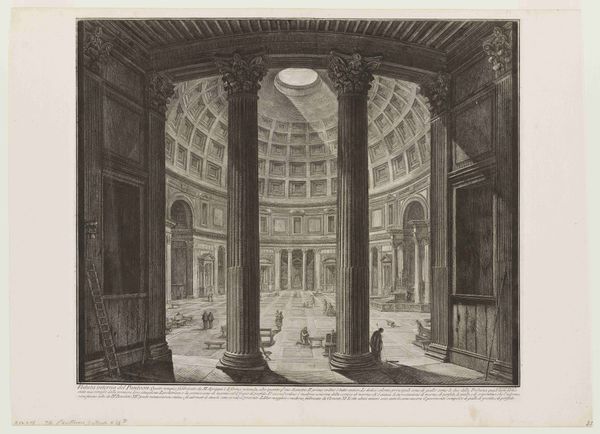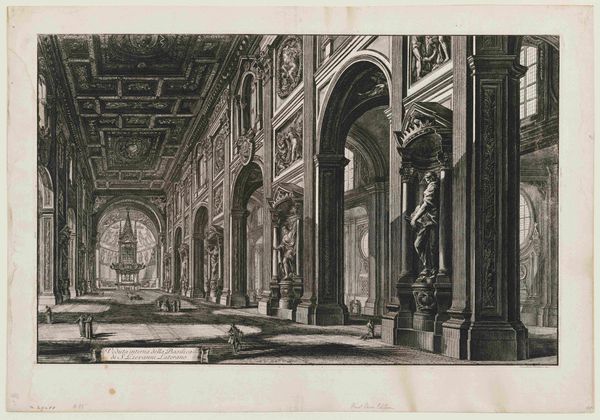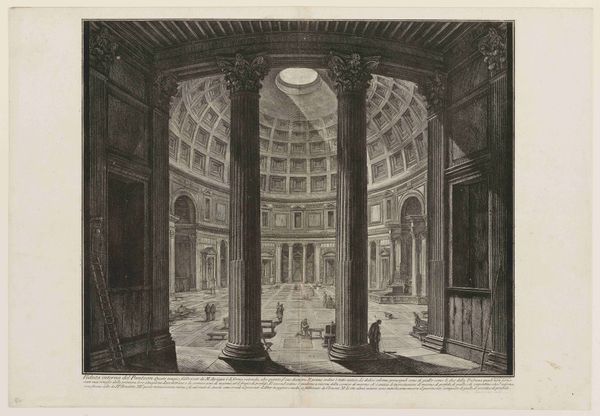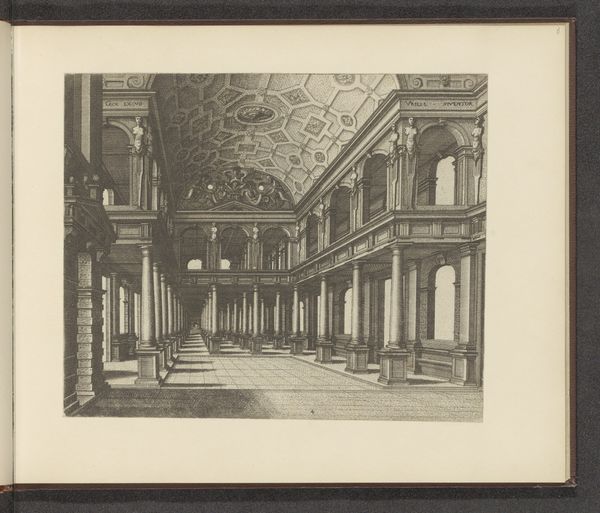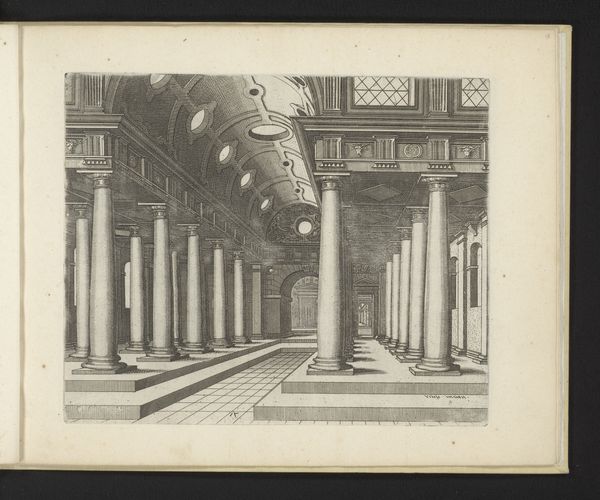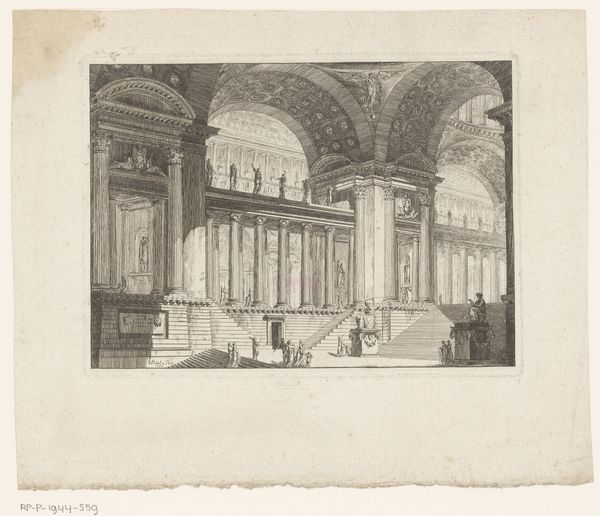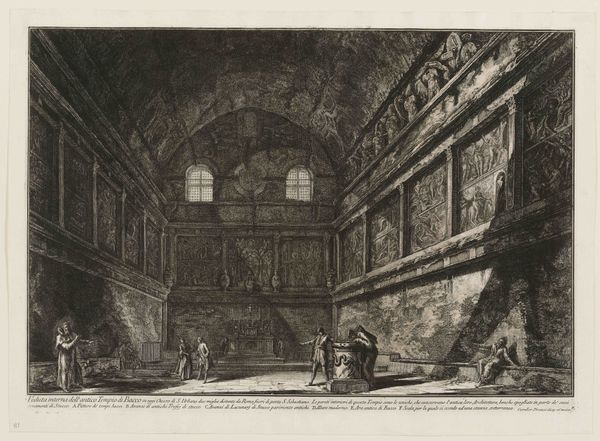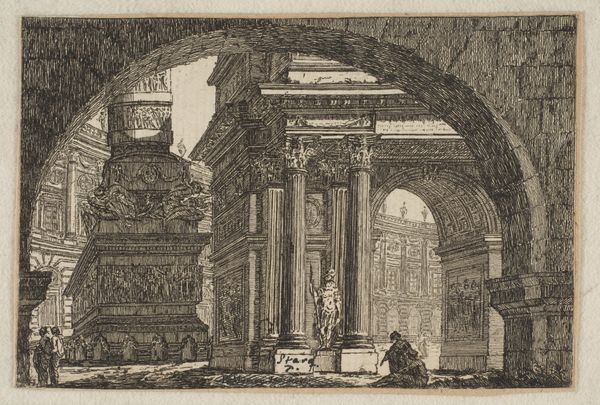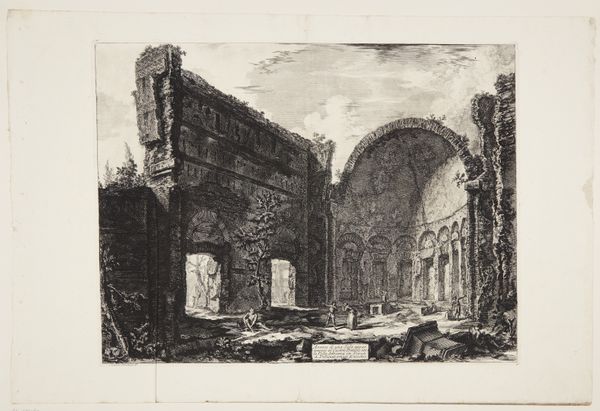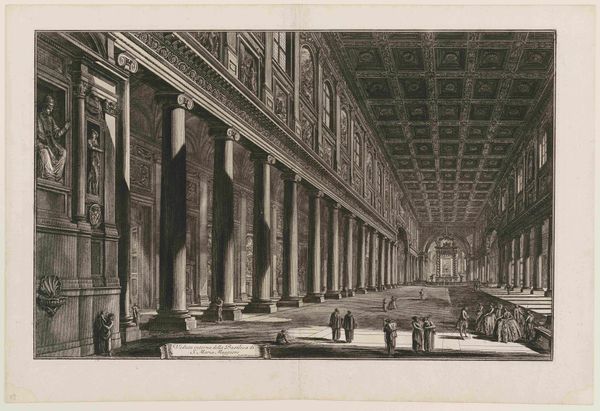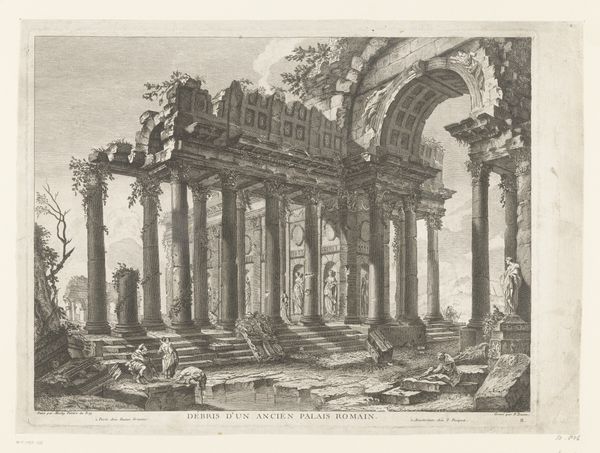
Interior view of the Pronaos of the Pantheon 1769
0:00
0:00
print, intaglio, engraving, architecture
#
neoclacissism
# print
#
intaglio
#
geometric
#
cityscape
#
history-painting
#
engraving
#
architecture
Dimensions: 390 mm (height) x 535 mm (width) (plademaal)
Editor: So, this is Giovanni Battista Piranesi’s "Interior view of the Pronaos of the Pantheon," an engraving from 1769. It's really impressive how he captures the sheer scale of the architecture using just lines and shadows. I'm immediately struck by the contrast between the massive columns and the tiny figures below. What aspects of its visual composition stand out to you? Curator: The strategic use of light and shadow to articulate the architecture is, indeed, paramount. Notice how the sharply defined light, raking across the columns, not only emphasizes their volume but also dissects the space into distinct planes. Piranesi masterfully uses the intaglio medium to create gradations in tone that articulate depth and dimension. What does the contrast of light and dark contribute to the image, aesthetically? Editor: I see it adds drama, and really highlights the contrast in texture and mass between the columns and the walls, directing my eye through the space, doesn't it? Curator: Precisely. This manipulation guides the gaze, but more significantly, it imposes a visual hierarchy. Observe the proportional relationships between the architectural elements, and then to the human figures, scattered rather uniformly through the space. Does this suggest anything about the symbolic intent? Editor: Hmmm... maybe it emphasizes the power of Roman architecture and reduces the importance of the people within it. The building becomes the main subject, not the people. Curator: Precisely. Consider too, the calculated geometry inherent in the composition - the regimented order of the columns against the vast, receding space. This reinforces a theme common during the period - neoclassicism. Editor: I never thought of it that way. I focused so much on the architecture that I overlooked its systematic composition. I learned that a lot can be gained by analyzing internal components, not only subject matter. Thanks! Curator: The devil, as they say, is in the details. Examining the intrinsic qualities provides an insightful methodology for further art viewing experiences.
Comments
No comments
Be the first to comment and join the conversation on the ultimate creative platform.

